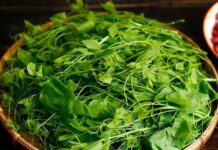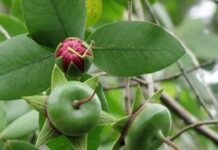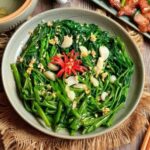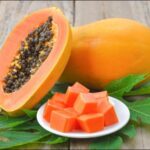**Green Onions**
Green onions are a familiar and favored spice in Asian cuisine, especially in the daily meals of Vietnamese people. This vegetable is not only easy to grow but also has the ability to thrive in various environmental conditions. Green onions are rich in vitamin C and contain many valuable nutrients for health.
What’s special is that green onions, along with some other vegetables in the allium family, can help prevent cancer, especially stomach cancer. Although the specific cause is unknown, many studies suggest that allicin, the compound responsible for their distinctive aroma, may play a crucial role in inhibiting the growth of dangerous cells and slowing the spread of tumors.
There are diverse ways to cook green onions, including stir-frying, boiling, stewing, or even eating them raw. Besides enhancing the flavor of dishes, green onions offer numerous health benefits.
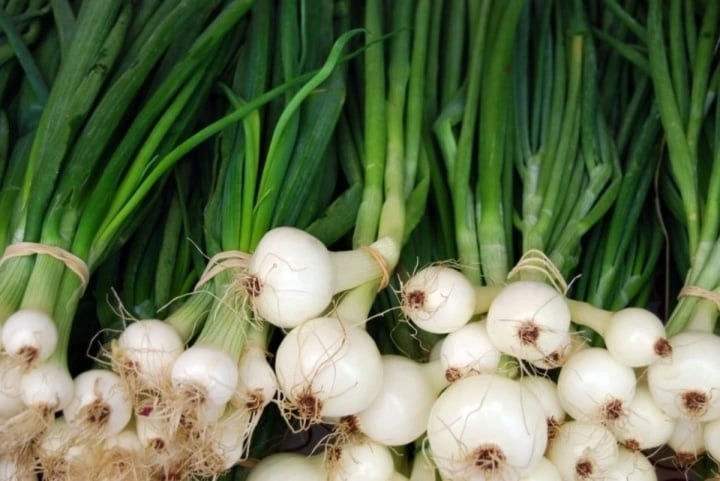
Green onions not only enhance the flavor of dishes but also offer numerous health benefits.
With their fresh flavor, green onions are an ideal choice for various dishes. In medicine, extracts from onions, garlic, and other vegetables in this family have been used to treat illnesses due to their ability to kill bacteria, fungi, and viruses. Some studies have shown that at high enough concentrations, green onions can inhibit the growth of bacteria such as salmonella and E. coli.
To ensure the healthy growth of green onions, farmers need to be well-versed in pest control measures. However, harvesting too early can affect the quality and safety of the produce.
Here are some tips to help you choose high-quality green onions when shopping:
– Opt for fresh green onions: Look for green onions with deep green stalks, fresh leaves from root to tip, and bright white bulbs.
– Check their condition: Avoid buying green onions that have turned yellow or wilted, as this is a sign of spoilage.
– Choose rooted green onions: Green onions with intact, unscratched roots tend to have higher nutritional value.
– Wash the vegetables thoroughly: Use a clean water source to rinse the green onions, gently scrubbing them with softer vegetables.
– Dry them after washing: Use a clean paper towel to dry the vegetables, helping to eliminate any remaining bacteria.
**Cabbage**
When eating cabbage, many people have the habit of peeling off the outer leaves and only consuming the inner part. However, few realize that to achieve green, tasty vegetables with high yields, some farmers do not hesitate to use pesticides.
In fact, cabbage is typically sprayed with two types of pesticides during its growth: one applied directly to the roots and another sprayed onto the leaves. Additionally, fertilization and nitrogen supplementation are also common practices to stimulate growth. Therefore, before cooking, it is advisable to separate the leaves and soak them thoroughly.

Cabbage is usually sprayed with two types of pesticides during its growth.
**Tips for Identifying Safe Vegetables and Avoiding Pesticides**
Green vegetables are rich in vitamins and minerals, playing a crucial role in our daily diet. However, the issue of “contaminated vegetables,” containing harmful residues of plant protection chemicals and other substances, has become a significant concern for consumers due to many farmers’ non-compliance with safety regulations.
Identifying safe vegetables is essential to protect your health and that of your family. Here are some tips for choosing fresh, nutritious, and healthy vegetables when shopping:
– Unusual color: Vegetables sprayed with pesticides tend to have a darker green color than usual.
– Abnormal size: Vegetables containing growth stimulants or pesticides often have a noticeably larger or smaller size than the average.
– Strange taste or smell: If, during cooking, you detect any unusual odors or flavors, discard the vegetables immediately.





















